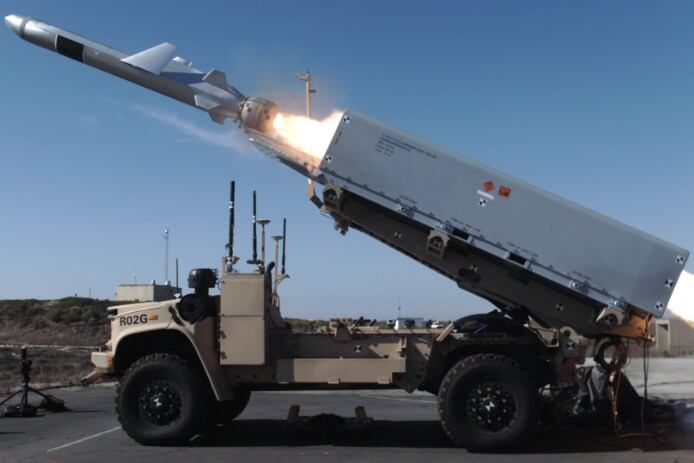WASHINGTON — The U.S. Marine Corps’ strategy to overhaul itself by 2030 for a high-end fight in the Pacific is based on a divest-to-invest model: The service will get rid of legacy equipment and units that aren’t useful in the fight it expects in the future, and in return the money that’s freed up will pay for developing the new, sophisticated technology it will need.
Still, getting a little more money in fiscal 2022 would help the service transform faster, Commandant Gen. David Berger wrote to lawmakers.
In an unfunded priorities list sent to Congress, the Marines say additional funding beyond the White House-approved FY22 budget request could support four key areas of investment that will set the Corps up for success in a fight against a peer adversary like China: fires, sensors, mobility and networks.
The unfunded priorities list is a chance for the services to send Congress an unfiltered wish list of how they would spend additional funds, if lawmakers were to make any available.
The top priority in the list is $57.8 million for 35 additional Naval Strike Missiles, which the Marine Corps intends to use as a land-based anti-ship missile, supporting the U.S. Navy by creating sea control and sea denial from the shore.
The FY22 budget request already includes funding for 29 missiles, and this extra funding line would bring that to 64 — the total needed to equip two medium-range missile batteries in the 3rd Marine Littoral Regiment, the first unit created under Force Design 2030 to reflect how the service will operate in the future.
“As the Marine Corps’ first Ground Based Anti-Ship Missile (GBASM) capability, [Navy-Marine Corps Expeditionary Ship Interdiction System, or NMESIS], is a Service force modernization priority central to its contribution to the Naval Expeditionary Force’s (NEF) anti-surface warfare campaign. Ground based launchers add a new type of threat against a peer adversary, stress different surveillance and offensive systems, are hard to detect and track in a cluttered environment, and add a significant level of persistence and depth to existing anti-ship capabilities,” read the Marine Corps document, obtained by Defense News.
“NMESIS will be employed by [medium-range missile] batteries serving as part of an MLR conducting Expeditionary Advanced Base Operations (EABO) while persisting inside the adversary’s weapons engagement zone (WEZ). When integrated into sensor and communication networks supporting a naval/maritime kill chain, and synchronized with employment of other missile systems, the Marine Corps’ [medium-range missile] battery will serve as a component of the NEF ‘stand-in force’ in support of the naval sea control effort,” the document stated.
The Marines also asked for $96 million for 48 Tactical Tomahawk missiles. Though the service will start out using the Naval Strike Missile for medium-range land-based strike missions, the Tomahawk will help extend its reach into longer ranges, with the Marines planning to develop a new long-range anti-ship missile to control even greater swaths of sea from small expeditionary bases on land.

The Marines are keenly interested in sensors; Berger and other leaders have said that in a future fight, every Marine and every platform will have to act as a sensor, reading the immediate environment and sending that information to a network that can better make sense of the overall operating theater. The service expects to operate in small groups that are widely dispersed, making sensing and communicating key to winning the fight.
The Marines also included in the list five items related to the AN/TPS-80 Ground/Air Task-Oriented Radar, or G/ATOR, program:
- $12 million for a software modification that will allow the radar to join the Naval Integrated Fire Control network with other Navy and Marine Corps systems.
- $40 million to buy 44 long-range radar retrofit kits that will give the G/ATOR longer range to operate in line with the Marine Corps’ Expeditionary Advanced Base Operations concept, which involves small, dispersed units spread throughout wide areas of land and sea.
- $12 million for research and development for a new radar signal processor.
- $285 million to develop and implement an air traffic control capability within G/ATOR and procure eight systems, as well as fund interoperability testing with the related Common Aviation Command and Control System and fund certification testing with the Federal Aviation Administration.
- $23 million to develop an air traffic control function within G/ATOR.
The unfunded list also requested investments in the MQ-9A Reaper drone, which would serve as an overhead sensor for the Marines and replace the smaller RQ-21 Blackjack as the service’s primary UAV for intelligence, surveillance and reconnaissance. The list included $40 million to procure two of the aircraft, $20 million for four ground control stations, and $20 million in research and development funds to develop and test enhanced sensors.
The MQ-9A is a Group 5 UAV, the top category in terms of range and endurance, and will serve as the Marines’ medium-altitude, long-endurance UAV “to accomplish ‘deterrence through detection’ in the maritime environment,” according to the document.
The Marines’ FY22 budget request continues to move the Corps toward its Force Design 2030 vision by investing in several key programs. The NMESIS program creates a mobile capability to strike enemy ships at sea from beaches or positions farther inland. It combines an unmanned Joint Light Tactical Vehicle, called the Remotely Operated Ground Unit Expeditionary Fires Vehicle, with the Naval Strike Missile, also called the Ground-Based Anti-Ship Missile.
The budget also invests in the Tactical Communications Modernization radio program, including buying multichannel hand-geld radios and vehicle integration kits. And it buys 92 Amphibious Combat Vehicles and 613 Joint Light Tactical Vehicles to modernize the service’s land and amphibious mobility.
Though the formal budget request begins with service-level input, it then goes to the Office of the Secretary of Defense and then up to the White House for approval, with cuts and changes made along the way to ensure the budget request is balanced and in line with administration priorities.
Megan Eckstein is the naval warfare reporter at Defense News. She has covered military news since 2009, with a focus on U.S. Navy and Marine Corps operations, acquisition programs and budgets. She has reported from four geographic fleets and is happiest when she’s filing stories from a ship. Megan is a University of Maryland alumna.





